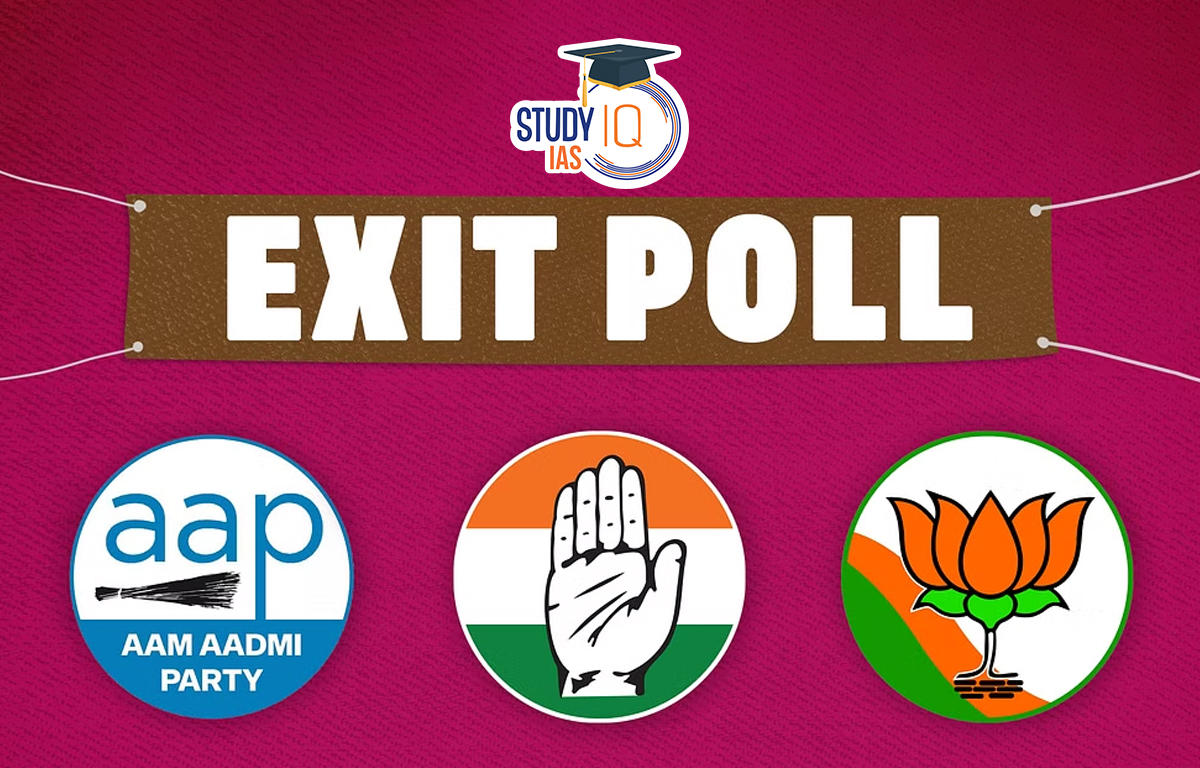Table of Contents
What are Exit Polls?
Exit poll is the opinion of voters taken immediately after they have exited the polling stations. This is used to forecast the outcome of an election.
Exit polls is different from opinion poll, which is conducted before the elections. Exit polls is supposed to give an indication of trends in an election, along with the issues, personalities, and loyalties that have influenced voters.
Historical origin: The Indian Institute of Public Opinion had conducted such a poll during the second Lok Sabha elections, 1957.
Carrying out exit polls: Exit polls are usually conducted by a number of organisations, often in tie-ups with media organisations. The surveys can be conducted either face to face or online.
Publishing results of exit polls: Currently, exit polls can’t be published from before voting begins till the last phase of voting concludes.
Methodology:
- To conduct an exit poll, the survey agency selects a random sample size. The sample size could range between 20-25,000 voters to 7-8 lakh voters.
- It is not necessary that all constituencies are surveyed in order to accurately predict the results. However, it is important that the sample size is geographically, socially and demographically representative.
- The most important task is to convert vote share into seats. Agencies mostly use a method called the “uniform regional swing” to convert vote share into seats.
Data Collected by Exit Polls:
- How the respondent voted in the election
- A variety of belief held by the voter such as the issues that were important in determining their vote and their party affiliation
- The demographic characteristics of the voter such as their age, gender, race and level of education.
Rules Governing Exit Polls
The first such effort to regulate exit polls was made in 1997 when the Chief Election Commissioner held meeting with political party representatives.
- These representatives alleged that these polls were unscientific, and suffered from biases in the size and nature of samples.
Guidelines under Article 324 of the Constitution:
- The Election Commission prohibited newspapers and news channels from publishing results of pre-election surveys and exit polls during voting.
- Newspapers and channels were mandated to disclose the sample size of the electorate, the details of polling methodology, the margin of error and the background of the polling agency, during publishing.
- However, the guidelines could not be implemented as there was no statutory backing.
Section 126 (A) of the Representation of the People’s Act, 1951:
- Amendments were made in the section to ban both exit and opinion polls during a period specified by the Commission.
- Punishment: Individual or agency violating the directive will face two-year prison term or fine or both.
Importance of Exit Polls
Final Intent: Exit polls capture the final voting intent displayed by voters, especially those who had not yet decided on their choice during opinion polls.
Accuracy: They also take into account any events or moves that were sucessful in changing voter’s opinion leading to the voting day. This increases the accuracy of election outcome.
Drawbacks of Exit Polls
Authenticity: Political parties sometimes allege that these polls are motivated, or financed by a rival party.
Unpredictibility: Results gathered in exit polls can be influenced by the choice, wording and timing of the questions, and also by the sample drawn.
Election Commission of India
The Election Commission of India (ECI) is a constitutional body established under Article 324 of the Constitution.
Mandate: It has the power of superintendence, direction, and control of elections to parliament, state legislatures, the office of the president of India, and the office of vice-president of India.
Structure: The commission is made up of a Chief Election Commissioner and two other election commissioners.The decisions by the commission are made by a majority vote.





















 WhatsApp
WhatsApp